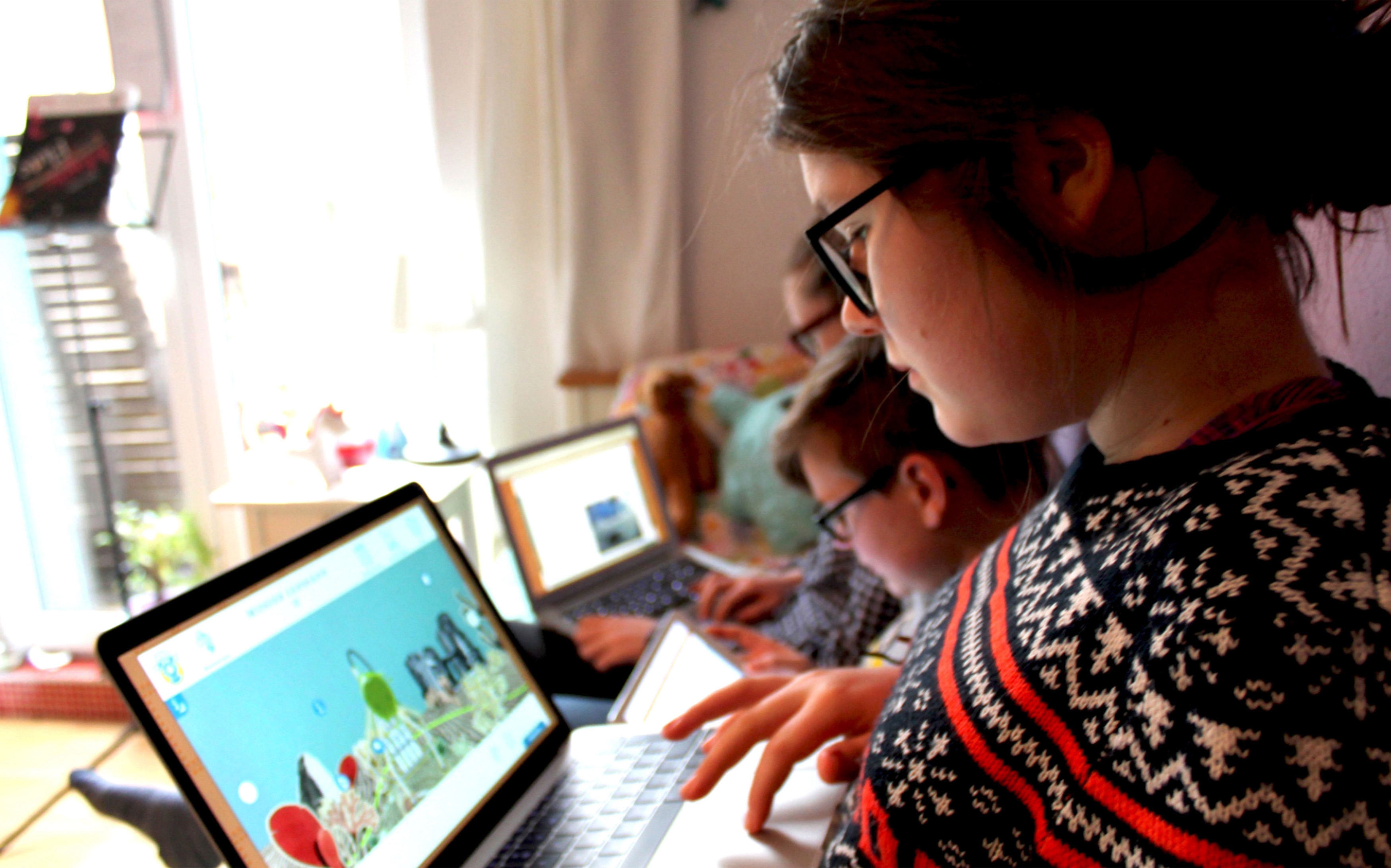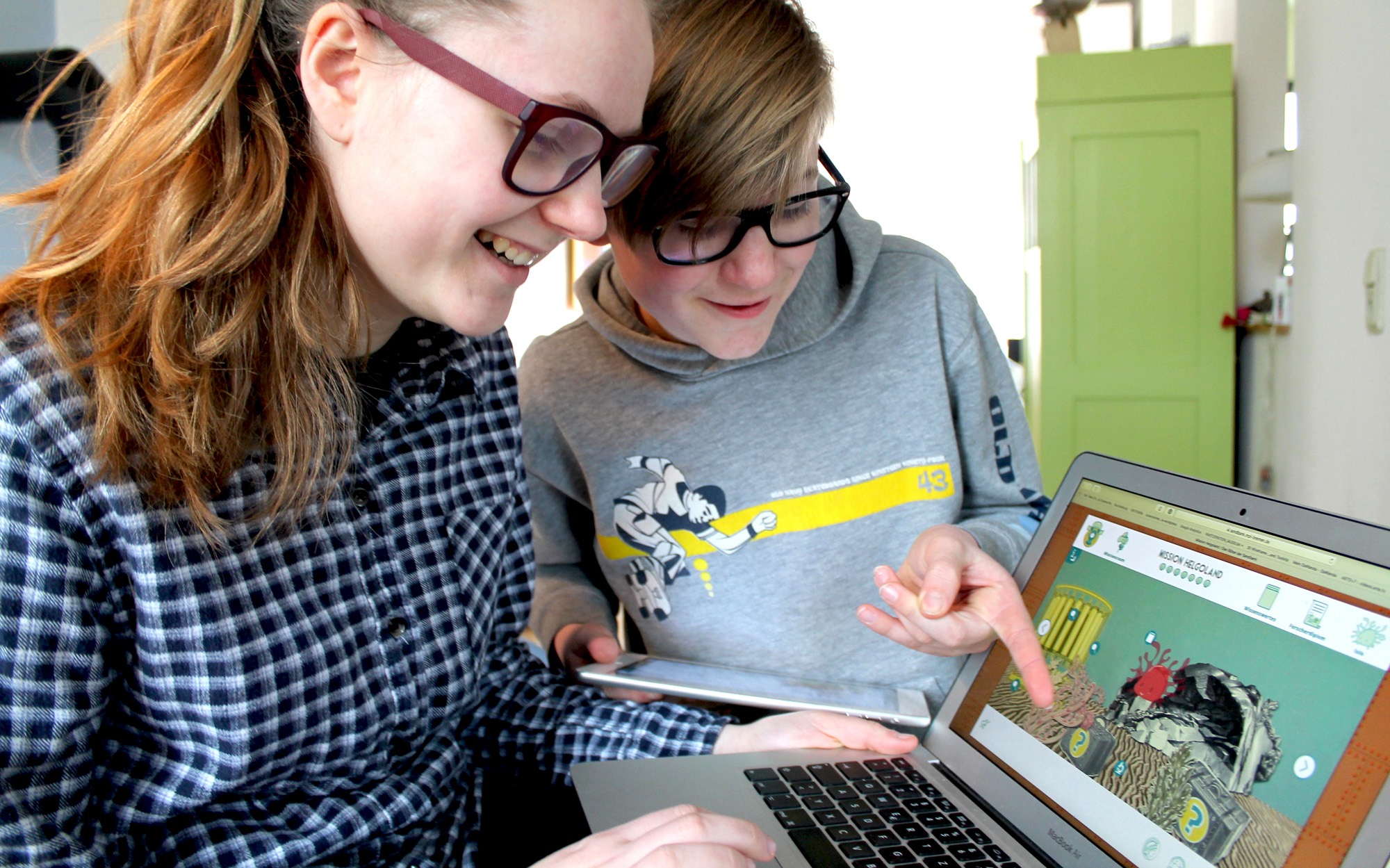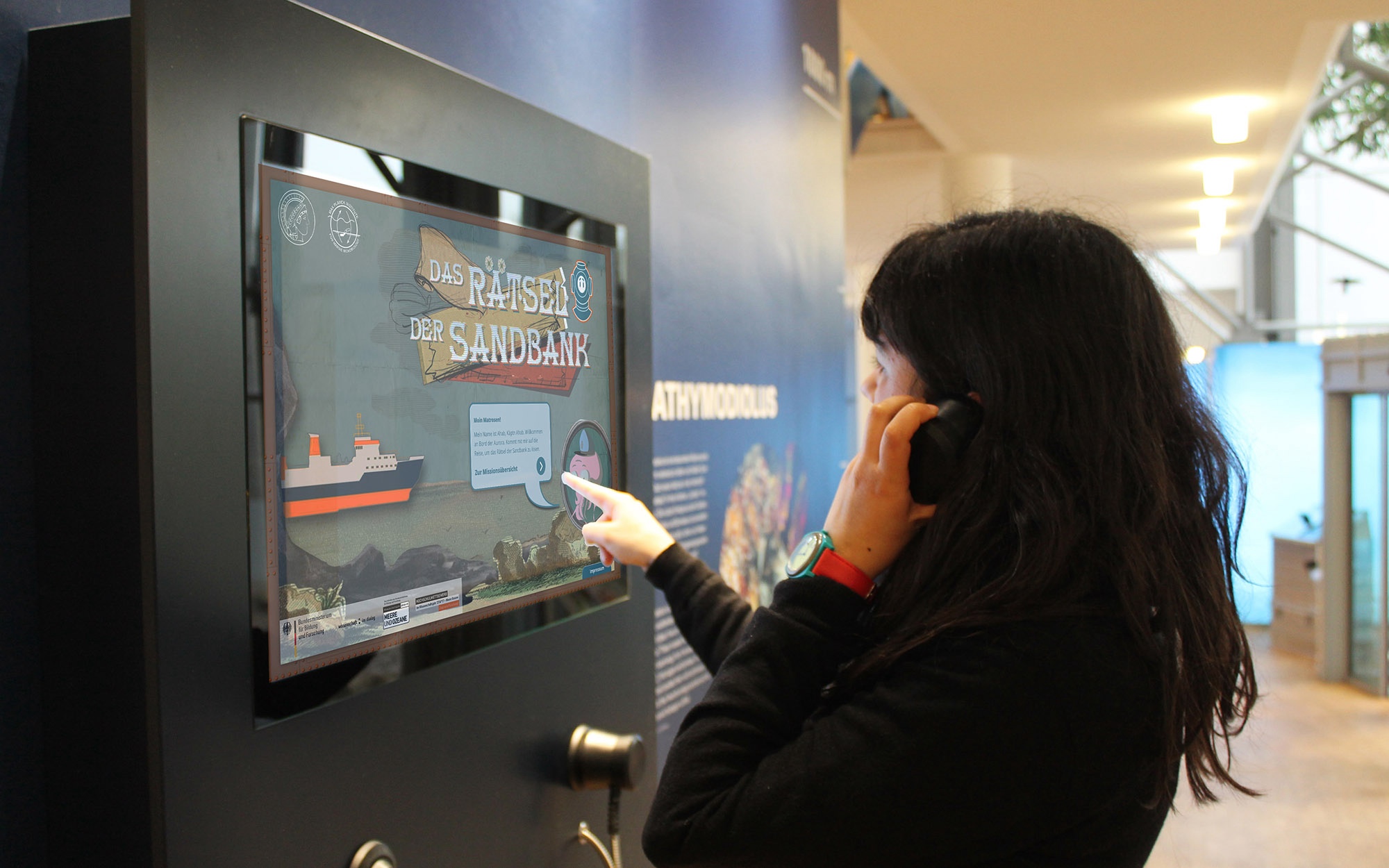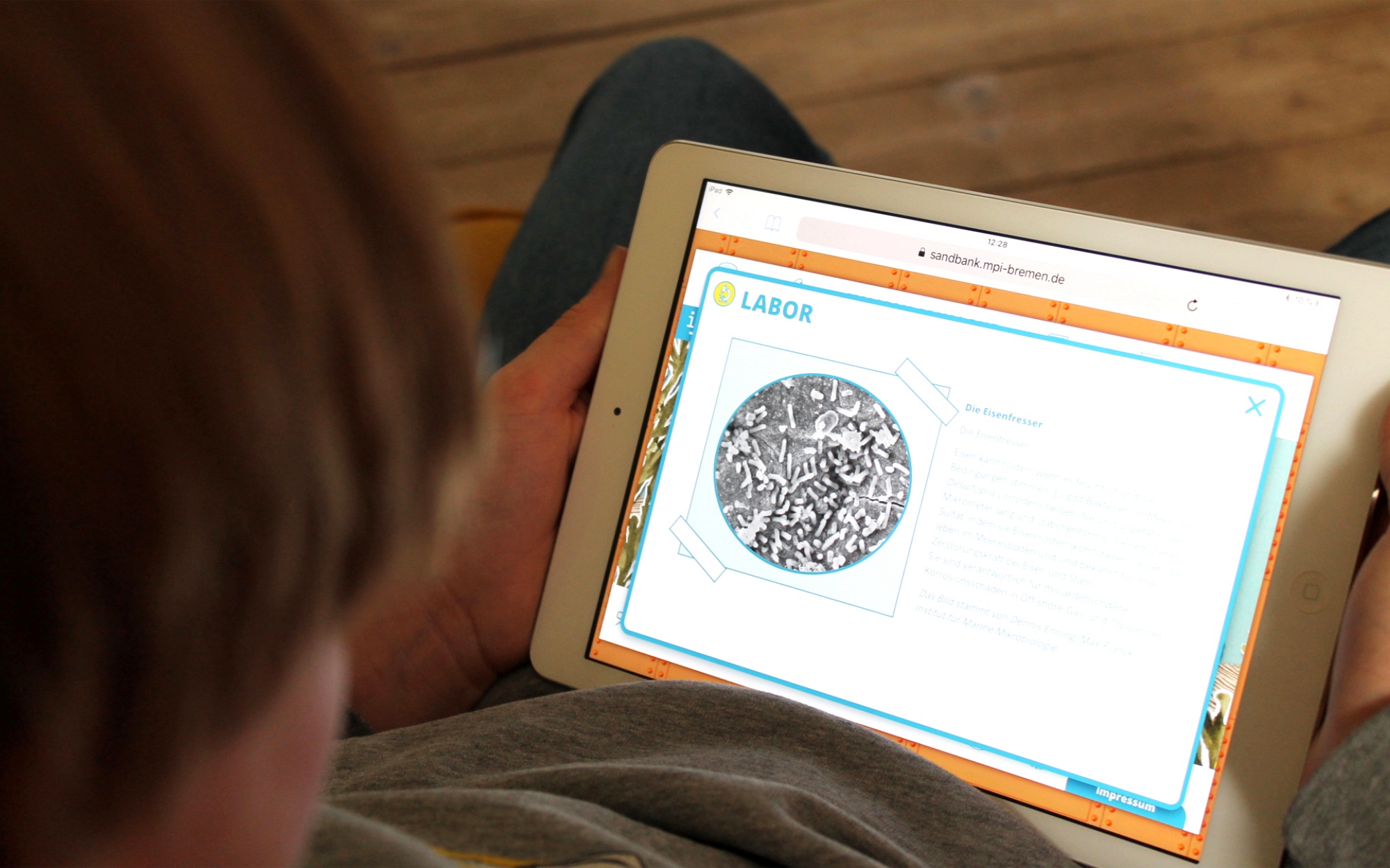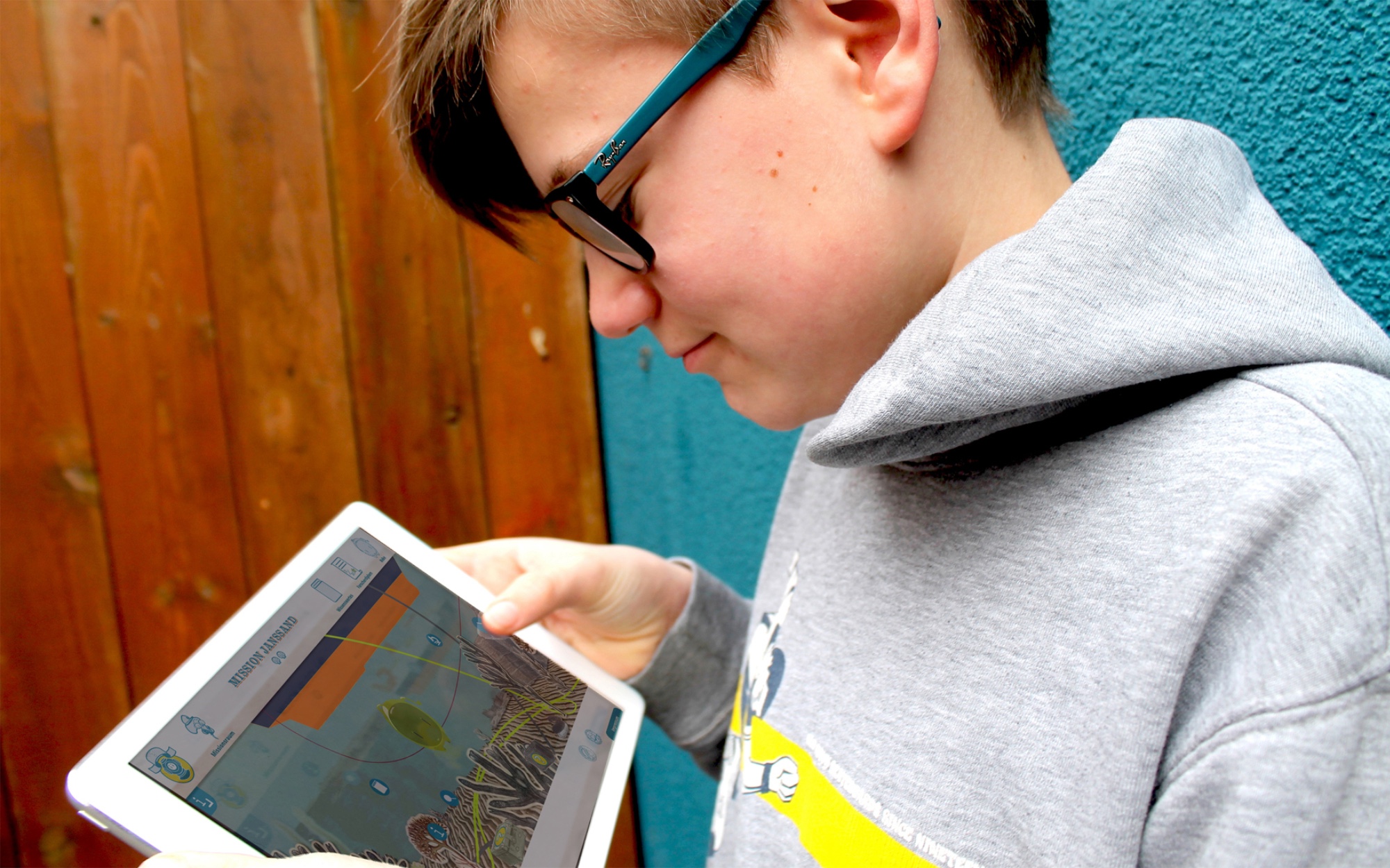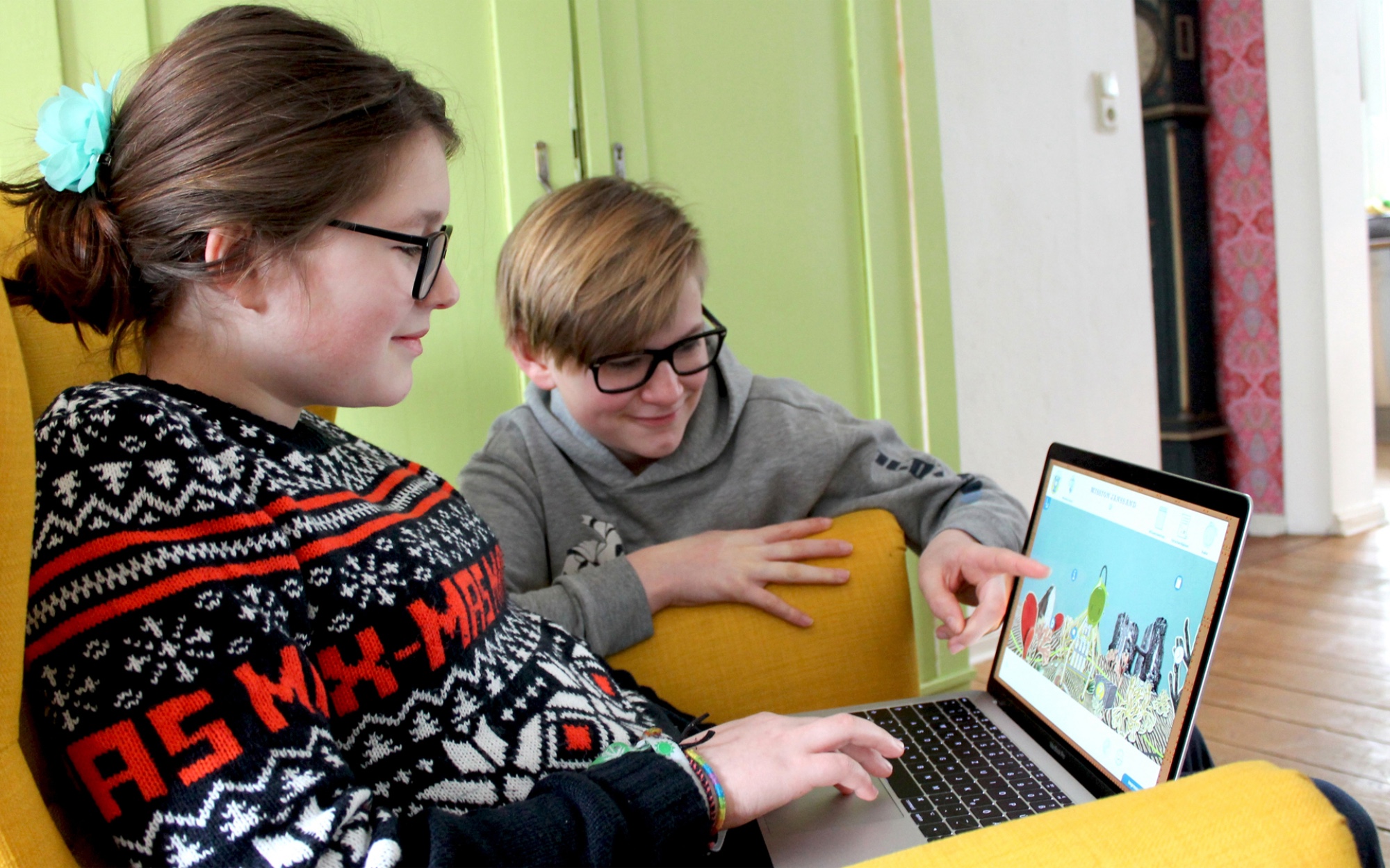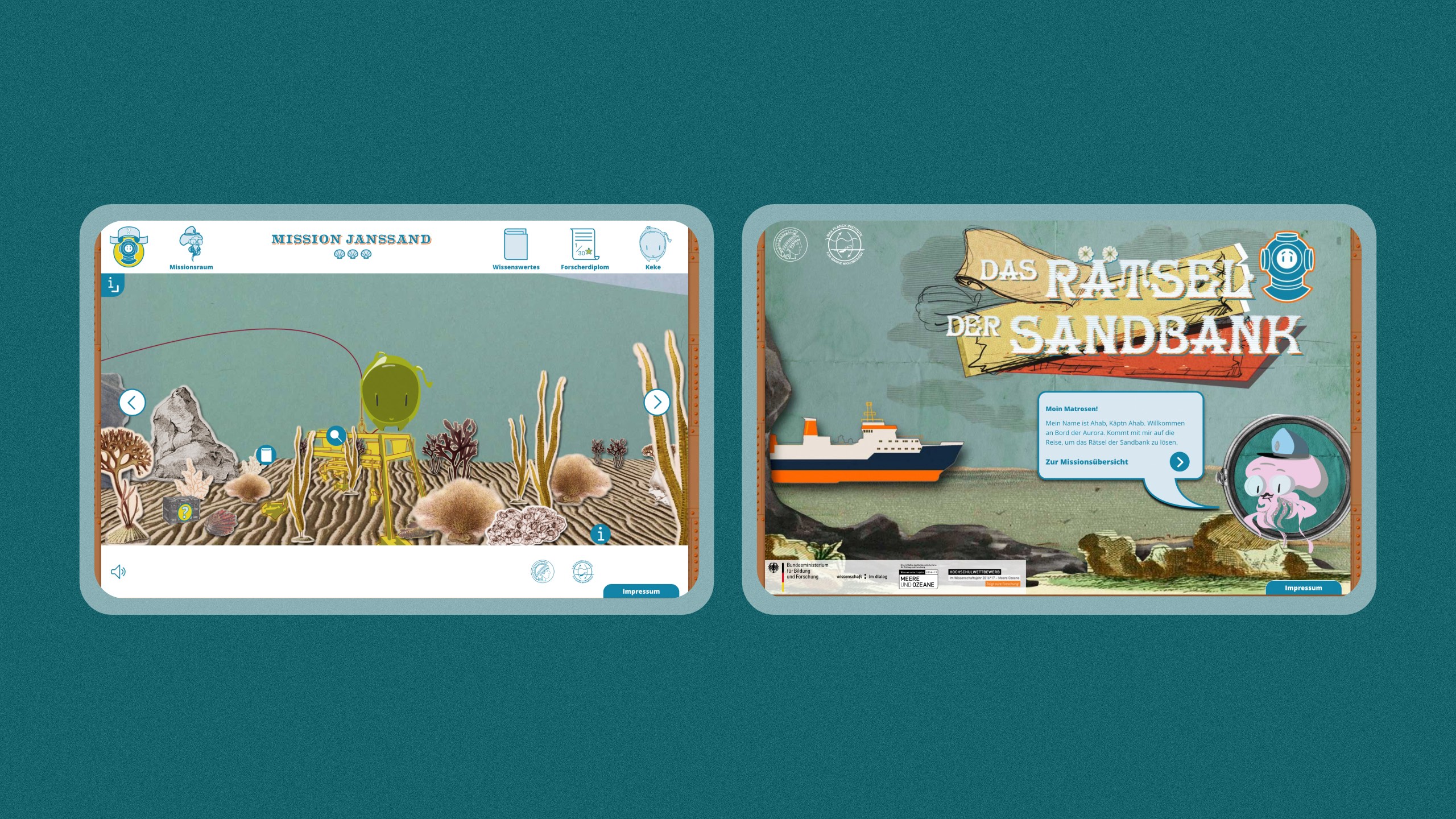As part of the science year "Seas and Oceans", we have developed an exciting online game on the basics of microbiology on behalf of the Max Planck Institute for Marine Microbiology.
The sandbank off Helgoland hides a secret inside: Hidden in the sediment and in the water column, tiny creatures, algae and bacteria ensure that our ecosystem functions. Over 5000 bacteria populate a single grain of sand. They constantly absorb carbon and therefore play an important role as a natural filter for the carbon and nitrogen cycle. But there are also fascinating things to discover around the sandbank. Small algae, which live in their thousands in every milliliter of seawater, have a major impact: algae in the sea fix carbon dioxide and produce around 50% of the oxygen in our atmosphere.


